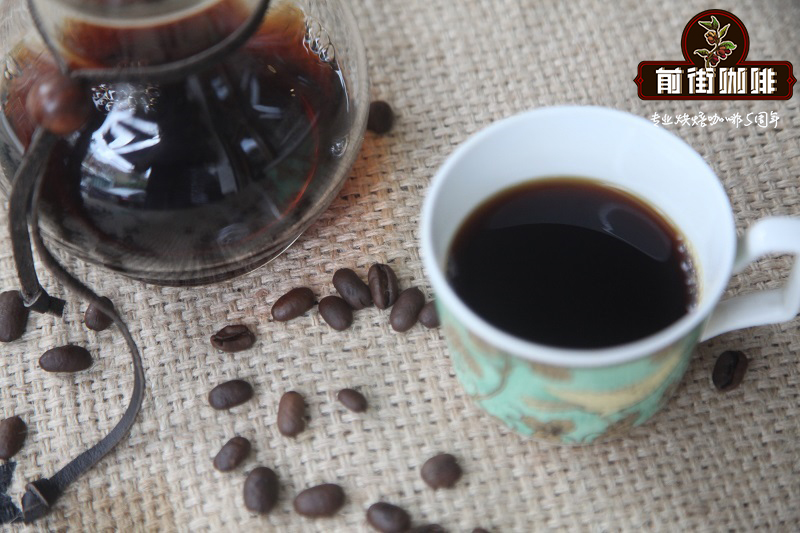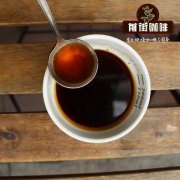What are the characteristics of Medellin coffee in Colombia? How to drink Medellin coffee in Colombia?

Professional coffee knowledge exchange more coffee bean information please follow the coffee workshop (Wechat official account cafe_style)
A cup of mellow coffee, its origin is not simple!
Colombian Coffee
Colombia is the largest producer of high-quality coffee in the world, and traditional deep-roasted coffee has a strong and memorable taste. Colombian coffee is one of the few original coffee sold in the world under the name of the country, which is the world's largest exporter of Arabica coffee beans. Rich in nutrients, some with nutty flavor. It is often described as having a silky taste. Of all the coffee, it has the best balance, soft and smooth taste, and can be drunk at any time. The most important production area in Colombia is referred to as MAM (the initials of Medellin, Armenia and Manizales), and most of Colombia's top coffee for export comes from MAM. Coffee in Medellin is of the best quality and high price, characterized by full grains, rich nutrition, rich aroma and moderate acidity.
Colombia is the second largest coffee industrial country after Brazil, and it is also the more famous producing area of "Medellin", "Manizarez", "Bogota", "Armenia" and so on. The coffee beans cultivated are all Arabica, with strong taste, stable quality and stable price. The fried coffee beans are bigger and more beautiful.
To the west of Colombia is the Andes, which is divided into three parts: the western, central and eastern mountains. The Cauca and Magdalena rivers flow along the Caribbean to the lowland plains. Colombia is currently the second largest coffee producer in the world, using washing to treat Arabica coffee beans. It is also one of the largest producers of high-quality coffee in the world. Traditional deep-roasted coffee has a strong and memorable flavor. Coffee was first introduced to Colombia in 1808, when it was brought by a priest from French Antilles via Venezuela. Today, the country is the third largest coffee producer after Brazil and Vietnam, with an annual output of 12 million bags of 60 kg each, while Brazil produces 31 million bags a year.
The status of coffee in Colombia can be seen in the following examples: all vehicles entering the country must be sprayed and sterilized so as not to inadvertently cause disease and damage coffee trees.
The main producing areas are Huila (San Augustin), Narino, Tolima, Popayan (Cauca), Valle de Cauca, Meta, Antioquia (Medellin), Magdelena (Sierra Nevada), Boyaca, Santander (Bucaramanga) and so on. Columbia University? It is documented that 700 million coffee trees are planted in plantations, 66% of which are planted in modern plantations, and the rest in small, traditionally run farms. The main varieties include Kaddura Caturra, Colombia Colombia, Tibica Tipica, Bourbon Bourbon, Elephant Bean Maragogype, and Tabi. Farms and cooperatives throughout the country, big or small, are distributed in more than 500000 municipalities and 14 major coffee-producing areas. A total of 2 million Colombians depend on coffee cultivation for a living, contributing 12.5 per cent to gross domestic product.
Coffee farmers in Colombia can sell all their products at an official low price? Can the Coffee Management Association sell it? Exporters, exporters may offer higher prices. In fact, the Coffee Management Association controls overall exports to Europe, while coffee to the United States is mainly exported through private exporters, however, all exports are controlled by the lowest export price.
The province of Antioquia (Antioquia), located in north-central Colombia, has 126000 hectares of coffee and produces 2000000 bags (60kgs/bag) of coffee beans, accounting for 18% of Colombia's production, second only to the province of Villa (Huila). Most of the province is alpine terrain belonging to the Andes, but it is swept by the warm Caribbean sea breeze. Medellin, the provincial capital, is Colombia's second largest city and an important coffee producing area in Colombia.
This production area has many small farmers micro-batch production of high-quality coffee beans are very characteristic of the flavor of the production area. In recent years, with the attention to the quality of coffee and the demand for fine coffee in the international market, we have changed to micro-batches (Micro-regional selections) provided by small farmers in micro-production areas, where dozens of small farmers provide their unit harvest into a micro-batch to sell. Quality control will be better, and many high-quality small farmers' coffee in specific micro-producing areas can be selected through batch-by-batch cup testing. Its coffee flavor is more lively, with fresh aromas of ripe fruit and caramel, and the combination of sour taste and sweet taste is well balanced.
Qianjie recommends Colombian coffee brewing parameters:
V60ap90 ℃ / 1 15 / total time two minutes
Flavor: plum, caramel
Important Notice :
前街咖啡 FrontStreet Coffee has moved to new addredd:
FrontStreet Coffee Address: 315,Donghua East Road,GuangZhou
Tel:020 38364473
- Prev

How do you drink Colombian Medellin coffee? What are the characteristics of Colombian coffee beans?
Professional coffee knowledge exchange more coffee bean information please follow the coffee workshop (Wechat official account cafe_style) drink water to think of the source, drinking coffee should also know where it comes from! Most of the coffee beans in circulation on the market are distinguished by origin. Different regions, different climates, different soils, different coffee tree species, and different processing methods of raw coffee beans will make the taste of coffee beans different.
- Next

How is Colombian coffee production? How to drink Colombian Medellin Coffee
For more information on coffee beans, please follow the Coffee Workshop (Wechat official account cafe_style). To the west of Colombia is the Andes, divided into three parts: the western, central and eastern mountains. The Cauca and Magdalena rivers flow along the Caribbean to the lowland plains. Colombia is currently the second largest coffee producer in the world, using water washing treatment
Related
- Detailed explanation of Jadeite planting Land in Panamanian Jadeite Manor introduction to the grading system of Jadeite competitive bidding, Red bid, Green bid and Rose Summer
- Story of Coffee planting in Brenka region of Costa Rica Stonehenge Manor anaerobic heavy honey treatment of flavor mouth
- What's on the barrel of Blue Mountain Coffee beans?
- Can American coffee also pull flowers? How to use hot American style to pull out a good-looking pattern?
- Can you make a cold extract with coffee beans? What is the right proportion for cold-extracted coffee formula?
- Indonesian PWN Gold Mandrine Coffee Origin Features Flavor How to Chong? Mandolin coffee is American.
- A brief introduction to the flavor characteristics of Brazilian yellow bourbon coffee beans
- What is the effect of different water quality on the flavor of cold-extracted coffee? What kind of water is best for brewing coffee?
- Why do you think of Rose Summer whenever you mention Panamanian coffee?
- Introduction to the characteristics of authentic blue mountain coffee bean producing areas? What is the CIB Coffee Authority in Jamaica?

